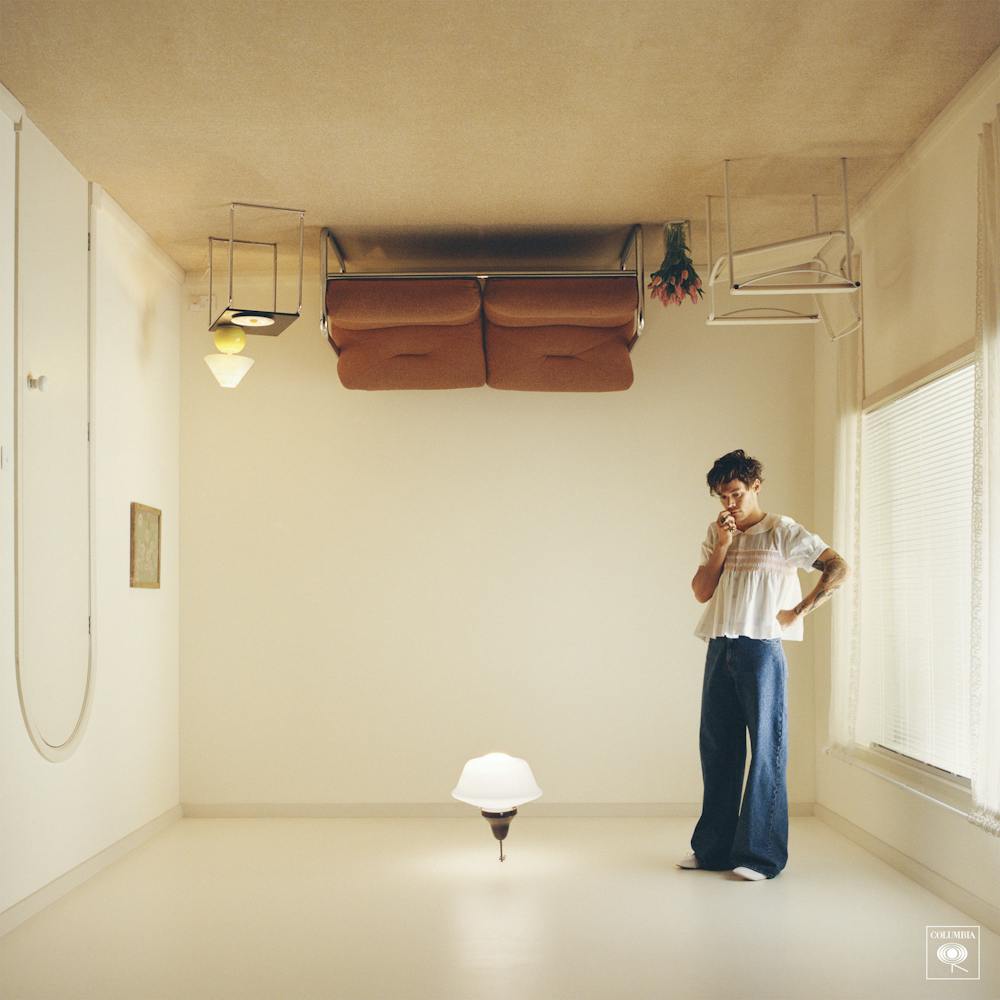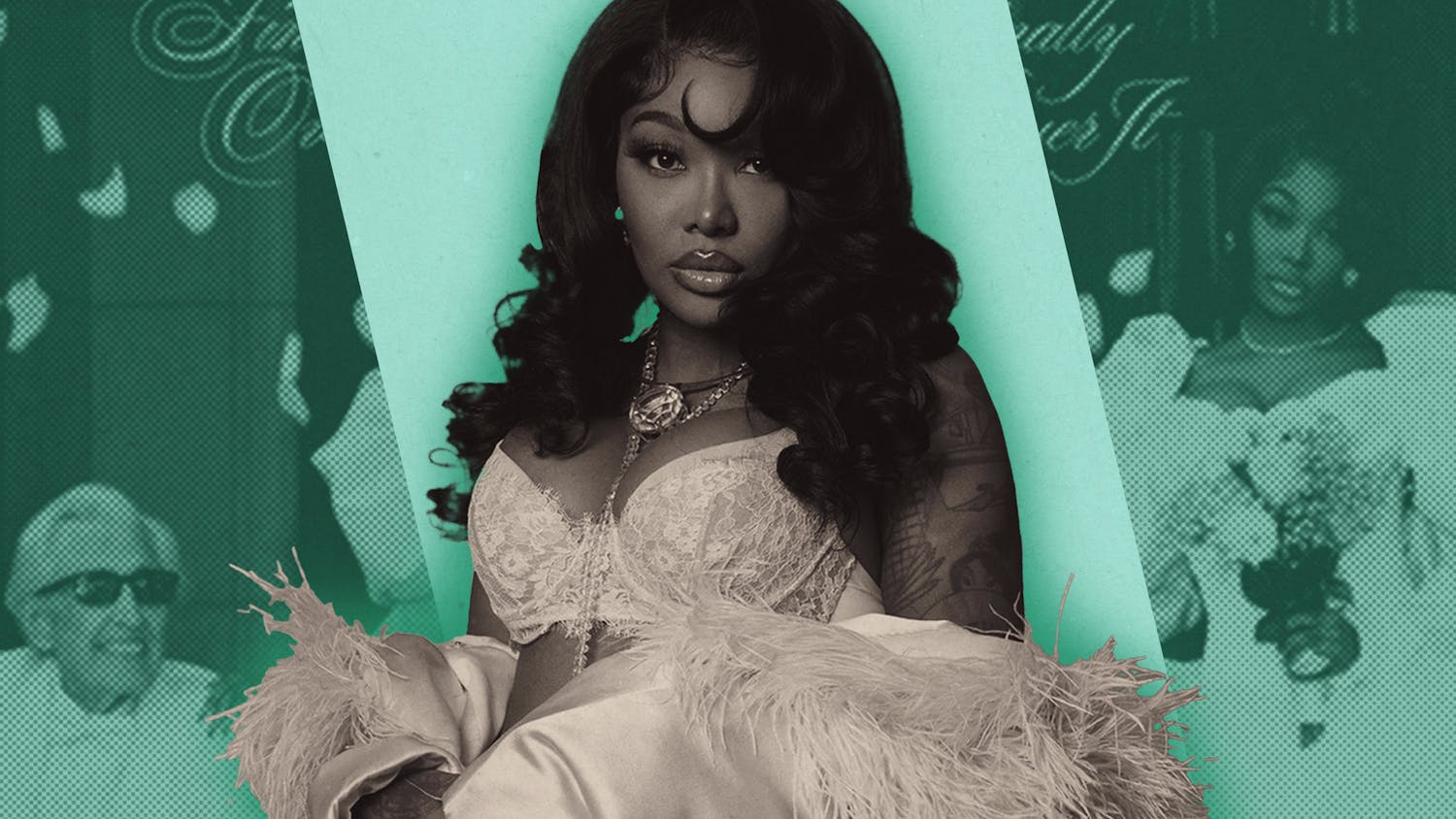To describe Harry Styles’ latest album as highly anticipated would be an understatement.
Reeling in over seven million likes on Instagram, the announcement of “Harry’s House” officially marked the end of a two-year music drought from the former One Direction band member.
Styles’ third studio album, released May 20, follows his award-winning 2019 album “Fine Line.” The sophomore release included hits like “Watermelon Sugar” and “Adore You,” both of which commanded charts and dominated radio stations for the majority of 2020.
Even though “Fine Line” found major commercial success, it’s obvious Styles felt reassured in pursuing a hint of something more unconventional.
In his 2017 self-titled debut album, Styles was unwavering in his commitment to rock. “Fine Line” pledged allegiance to pop. Styles’ first two albums clearly wedge themselves into specific genres, but “Harry’s House” hazes the line between categories. The blur is bolstered by ambiguous lyrics that are left for interpretation. “Tea with cyborgs” or “Moka pot Mondays” can only be analyzed in so many ways before giving birth to a ubiquitous theme that allows every listener to think about these 13 tracks differently.
Straying away from the simple pop influence “Fine Line” was founded on, Styles was inspired by an overarching sound that feels a little more DIY. With striking drum lines and an overreliance on brass instruments, the sonic shift that exists in every track on “Harry’s House” may disjoint the pipeline to mainstream radio, but the record’s mere anticipation is sure to land the songs on everyone’s summer playlists.
We take our first step into Styles’ home with the album opener, “Music For a Sushi Restaurant.” The song’s hypnotic, disco-inspired punch puts the singer’s own voice in the backseat. Full of jazz, a little scat and declarations of love, it bleeds seamlessly into track two, “Late Night Talking.”
The foyer of Harry’s metaphorical house is clean, lively and welcoming. Remaining funky and upbeat, like ‘70s dance music, the song ensures we are aware of the album’s dominating theme; Styles is in love.
Uttering promises of trailing someone's coattails everywhere they venture and letting them dwell in your mind, the first two tracks prime the listener with optimism.
Track three, “Grapejuice,” extends this dreamy mirage, alluding to buying flowers, hiding away and sharing a bottle of wine with your lover. It’s the type of carefree youth reminiscent of the early scenes in a coming-of-age movie.
So here we are, standing in a home seemingly built upon solid foundations and decorated with elegance and flair. But as we wander further down the halls, the ornamented walls are subtly torn down to give us a better look into Styles’ guarded mind.
The walls begin to crumble in the album’s lead single, “As It Was,” where the catchy tagline and groovy synth lines distract listeners from its devastating lyrics.
With standout lines such as “Answer the phone, Harry you’re no good alone / Why are you sitting at home on the floor? / What kind of pills are you on?” Styles essentially shared his darkest memories over a nice beat.
Songs like “Daylight” and “Keep Driving” present the same sentiment. The production may be light and ethereal, but the expressions of love begin to tarnish.
Styles is certainly in love, but he never claimed to be good at it.
Still high on the album’s tracklist, “Daylight” is easily mistaken for its predecessors. Coached to hear endearment and preoccupied with Style’s dreamy falsetto, listeners may brush over the red flags displayed by the lyrics of this song.
Even though the striking percussion lines and airy electronic undertones lift spirits, track five contains lyrics like “Daylight, you got me calling at all times / Ain’t gonna sleep till the daylight,” suggesting the singer’s affection has been traded in for obsession. “Keep Driving” balances romance and toxicity in a relationship, but the ultimate decision is to “just keep driving.”
Styles is guiding us through his home, and though each room is pleasing to the eye, we’re beginning to notice crooked picture frames, dirty dishes in the sink and maybe even a stain or two on the carpet.
The walls of “Harry’s House” come crashing down with the folk-driven track “Boyfriends” right before the album close.
Stripped of any production, we’re down to the bare bones of Styles’ self-depreciation. Singing lyrics like “Boyfriends, they think you’re so easy / They take you for granted / They don't know, they’re just misunderstanding,” the author is unabashed in admitting their past faults.
“Love Of My Life” juxtaposes a predominant dark synth with otherwise light acoustics, and closes the album with the remorseful pang of losing somebody and knowing it was your fault.
Styles sucks at love; maybe we all do.
With nothing left of Harry’s house but rubble, we begin to unearth the idea that home isn’t necessarily the physical concrete walls we reside in, but instead, the relationships and situations we choose to dwell in.
In an interview with Better Homes and Gardens, Styles said he realized the feeling of home isn’t something you can get from a house; it’s an internal feeling.
The eclectic idea of “home” is most noticeable in “Matilda,” where Styles encourages listeners to shake off the past and construct the life that makes them feel whole. The song, driven by delicate guitar picking, reassures listeners that “You can let it go / You can throw a party full of everyone you know / You can start a family who will always show you love.”
“Harry’s House” puts on display the highest of highs and the lowest of lows, but Styles’ unprecedented vulnerability breathes fresh air into what life is: the two extremes interlacing.
“I think that accepting living, being happy, hurting in the extremes, that is the most alive you can be,” Styles told Better Homes and Gardens. “Losing it crying, losing it laughing — there’s no way, I don’t think, to feel more alive than that.”
Perfect for the warm days crowned with the relief of a cool breeze, “Harry’s House” sets the precedent for any upcoming summer albums. It paints the impression of a season full of dancing and the type of self-reflection that feels more like catharsis than anything.
Rate: 9/10
While this is the most candid Styles has been in his music, there’s a part of me yearning for that final slice of honesty. With numerous songs saturated in extended metaphors, it’s clear that Styles will continue to guard the barefaced frankness that would tie the whole album together. However, we are only guests in Harry’s house, and the reserved vulnerability of the homeowner allows us to morph his lyrics into something applicable to our own lives.

Averi Kremposky is a senior journalism major at the University of Florida. When she’s not covering music, art and culture beats for The Avenue, you can find her going to a concert, finishing another book in one sitting or submitting to the latest Taylor Swift album theory.






